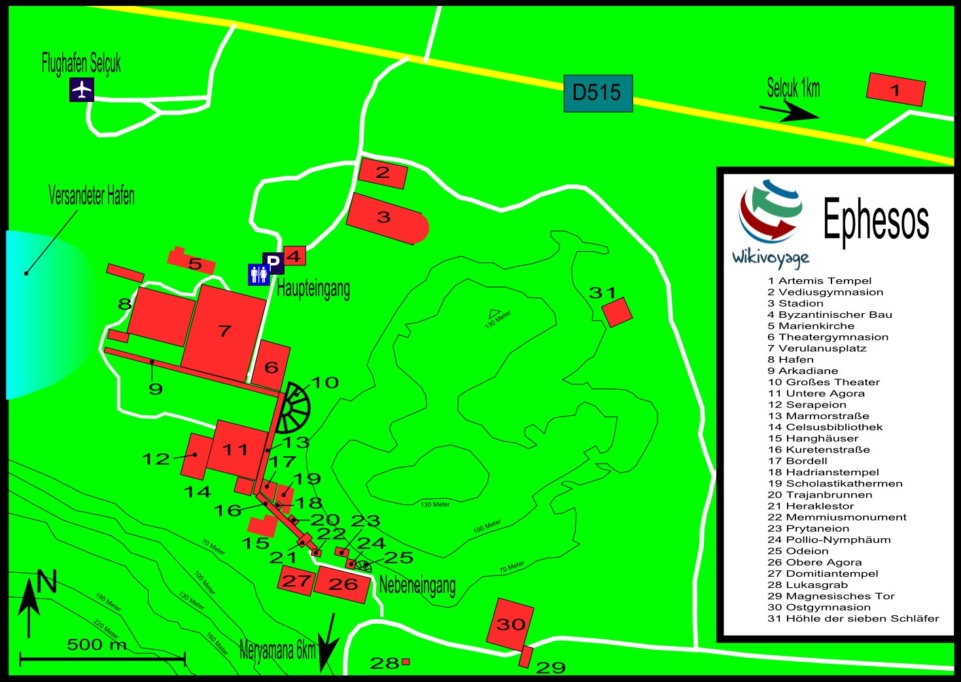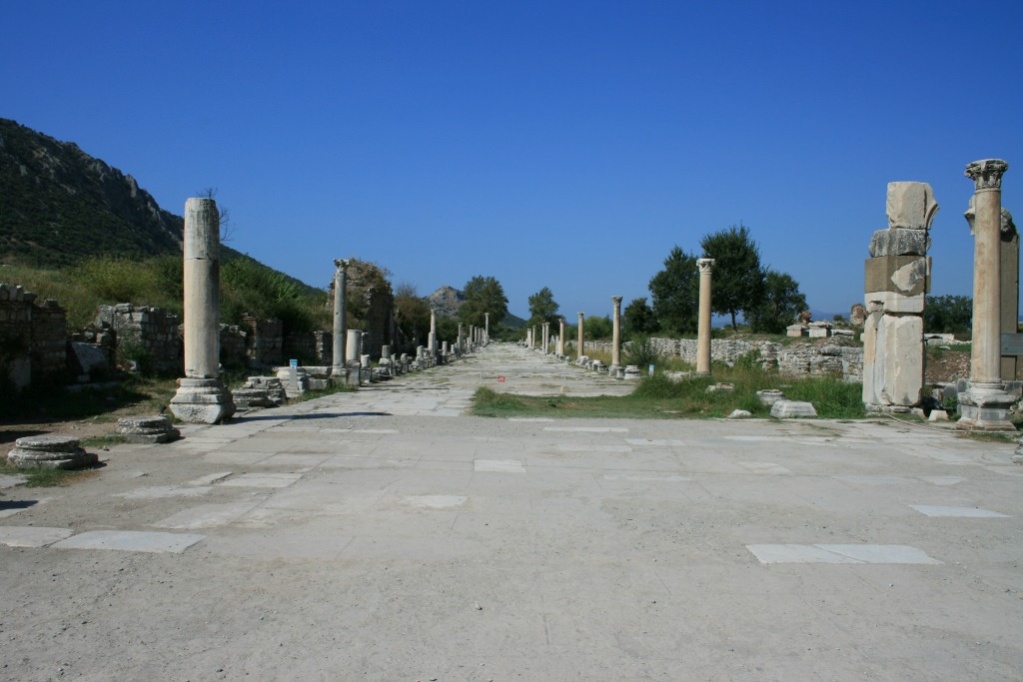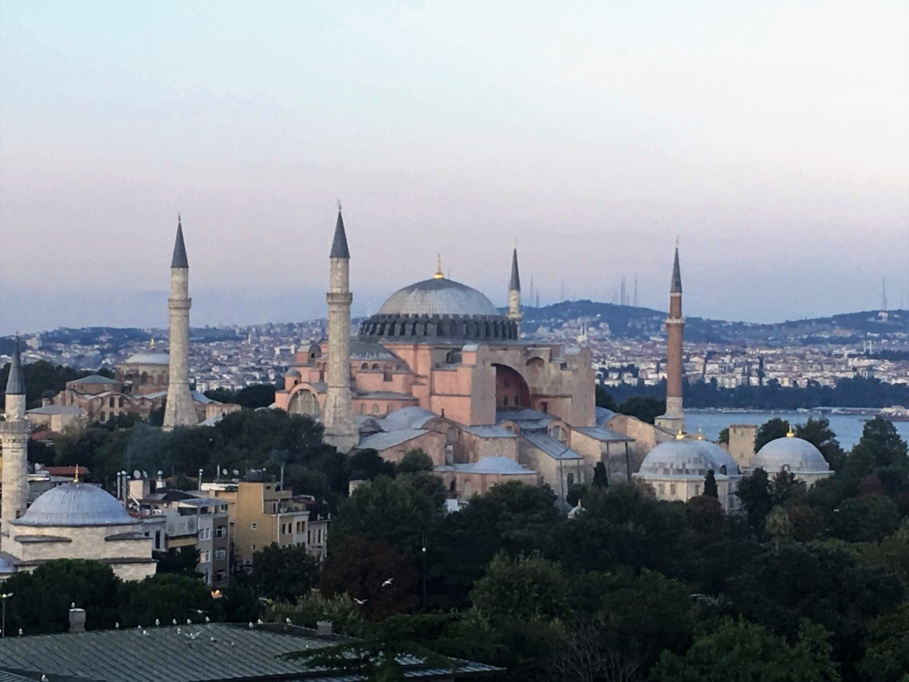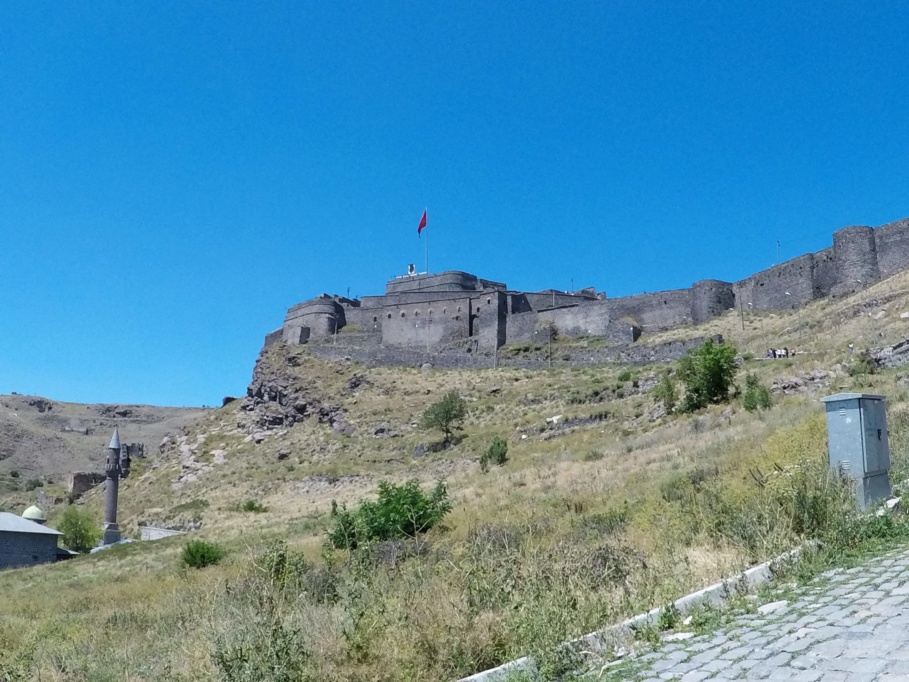Ephesus Turkey Travel Guide A Vagabond Life
Ephesus, situated in modern-day Turkey, is a mesmerizing archaeological site that stands as a testament to the grandeur of ancient civilizations. Originally founded by the Greeks in the 10th century BC, Ephesus flourished as a major Greek and later Roman city, becoming one of the largest metropolises of the ancient world. Its strategic location as a port city on the Aegean coast facilitated its growth into a thriving hub of commerce, culture, and spirituality.
Today, visitors to Ephesus can wander through its remarkably preserved ruins, marveling at iconic structures such as the Library of Celsus, the Great Theater, and the Temple of Artemis, one of the Seven Wonders of the Ancient World. The site’s rich history and architectural splendor offer a fascinating glimpse into the daily lives of its inhabitants, spanning centuries of civilization.
Exploring Ephesus is a journey back in time, where the echoes of ancient footsteps still resonate amidst the columns and cobblestone streets, making it a must-visit destination for history enthusiasts and travelers alike.
Tickets can be purchased at the gate.
Ephesus Turkey Map
Getting To Ephesus Turkey
Ephesus, an ancient city renowned for its well-preserved ruins, is situated near the modern town of Selçuk in Turkey’s İzmir Province. Reaching Ephesus is relatively straightforward due to its accessibility from major Turkish cities and transport hubs.
The nearest airport to Ephesus is Adnan Menderes Airport in İzmir, located approximately 60 kilometers (37 miles) from the site. This airport offers both domestic flights from cities like Istanbul and Ankara and international flights from various European destinations. From the airport, you can take a direct bus, rent a car, or use a taxi to reach Selçuk, the gateway town to Ephesus.
Alternatively, the smaller Denizli Cardak Airport, about 150 kilometers (93 miles) away, also serves the region and is an option if you’re traveling from southern Turkey. From Denizli, you can take a bus or train to Selçuk.
For those traveling by train, Turkey’s rail network connects Selçuk to İzmir with frequent and comfortable services. The train ride offers scenic views and is a convenient way to reach the town. Additionally, long-distance buses from major cities like Istanbul and Ankara also serve Selçuk, making it easy to access Ephesus from across Turkey.
Getting Around Ephesus Turkey
Once you arrive in Selçuk, getting around Ephesus and its surroundings is relatively easy, though a car or local transport is often necessary for convenience.
Ephesus is best explored on foot, as the ancient city’s ruins are spread across a large area. The site is well-preserved and features well-marked paths and signposts to guide visitors through its major attractions, including the Library of Celsus, the Great Theatre, and the Temple of Artemis. Comfortable walking shoes are recommended to navigate the uneven terrain.
For those looking to explore beyond Ephesus, a car rental is advantageous. Selçuk is well-connected to nearby attractions, such as the House of the Virgin Mary and the ancient city of Miletus. Having a car allows you to visit these sites at your own pace and explore the beautiful surrounding countryside.
Local transportation options include taxis and minibuses, which are useful for shorter trips or if you prefer not to drive. Additionally, organized tours from Selçuk can provide guided transportation to Ephesus and other nearby historical sites. Public buses also connect Selçuk to İzmir and other regional towns, making it easy to navigate the broader area.
Overall, while walking is ideal for exploring the ruins of Ephesus itself, a car or local transport options are useful for broader exploration and convenience in the region.
Things To See & Do In Ephesus Turkey
The Library of Celsus Ephesus Turkey
The Library of Celsus, an iconic structure of ancient Ephesus in Turkey, is one of the most impressive and well-preserved ruins from the Roman era. Constructed between 114 and 117 AD during the reign of Emperor Trajan, it was commissioned by Gaius Julius Celsus Polemaeanus, a wealthy Roman senator, as a monumental tomb and library in honor of his father, Tiberius Julius Celsus.
Architecturally, the Library of Celsus stands out for its grandeur and intricate design. The facade is adorned with ornate Corinthian columns, elegant statues, and elaborate reliefs, showcasing a blend of architectural sophistication and artistic detail. The library originally housed thousands of scrolls and manuscripts, making it one of the most significant libraries of the ancient world. It was not only a center of learning but also a symbol of cultural and intellectual prosperity.
The structure was partially destroyed by an earthquake in 262 AD and fell into disrepair over the centuries. However, extensive restoration efforts have helped preserve its majestic facade, allowing visitors to marvel at its architectural beauty and historical significance. The Library of Celsus, with its striking facade and historical importance, remains a highlight of Ephesus, offering a glimpse into the grandeur of ancient Roman architecture and the intellectual life of the period.
The Temple of Hadrian Ephesus Turkey
The Temple of Hadrian, located in the ancient city of Ephesus in Turkey, is a striking example of Roman architectural splendor and religious devotion. Constructed around 138-144 AD during the reign of Emperor Hadrian, the temple was dedicated to the emperor and his family, reflecting the Roman practice of deifying emperors and celebrating their contributions to the empire.
The temple is renowned for its elegant and detailed design, combining elements of Corinthian architecture with intricate sculptural decorations. The facade of the Temple of Hadrian is particularly notable for its ornate reliefs and elaborate carvings. The most prominent feature is the grand archway adorned with decorative motifs, including a depiction of the goddess Nike (Victory) and the figure of Medusa, which adds a dramatic and mythological element to the structure.
Inside the temple, visitors can still see remnants of the original marble flooring and columns, though much of the interior has been lost over time. Despite this, the well-preserved facade and the surrounding ruins offer a vivid glimpse into the grandeur of Roman religious architecture.
The Temple of Hadrian is situated near the Curetes Street, a prominent thoroughfare in Ephesus, and stands as a testament to the city’s importance and affluence during the Roman period. Its historical and architectural significance makes it a key highlight for visitors exploring the ancient ruins of Ephesus.
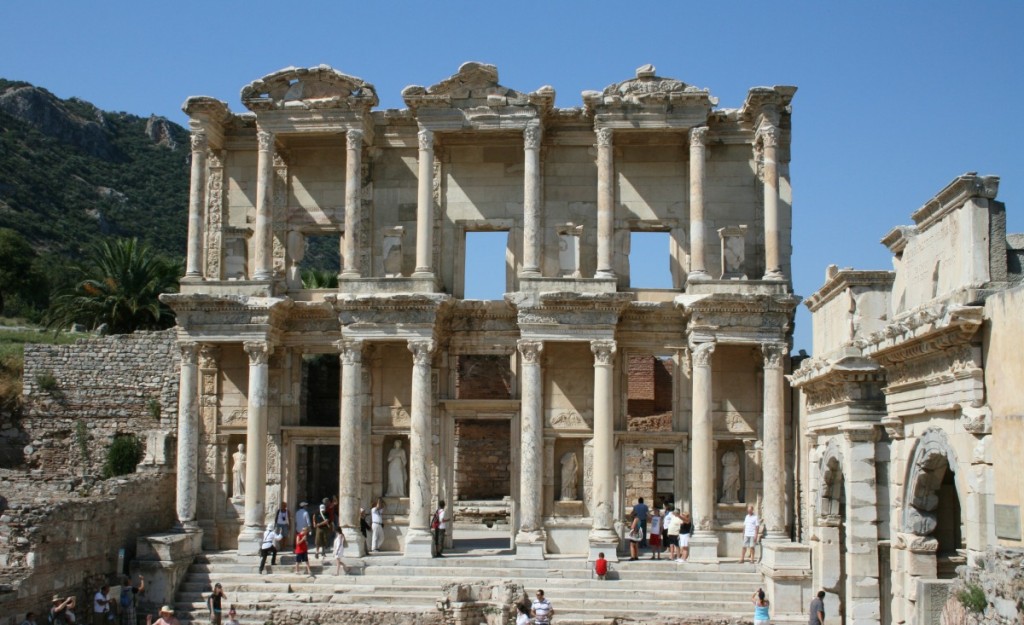
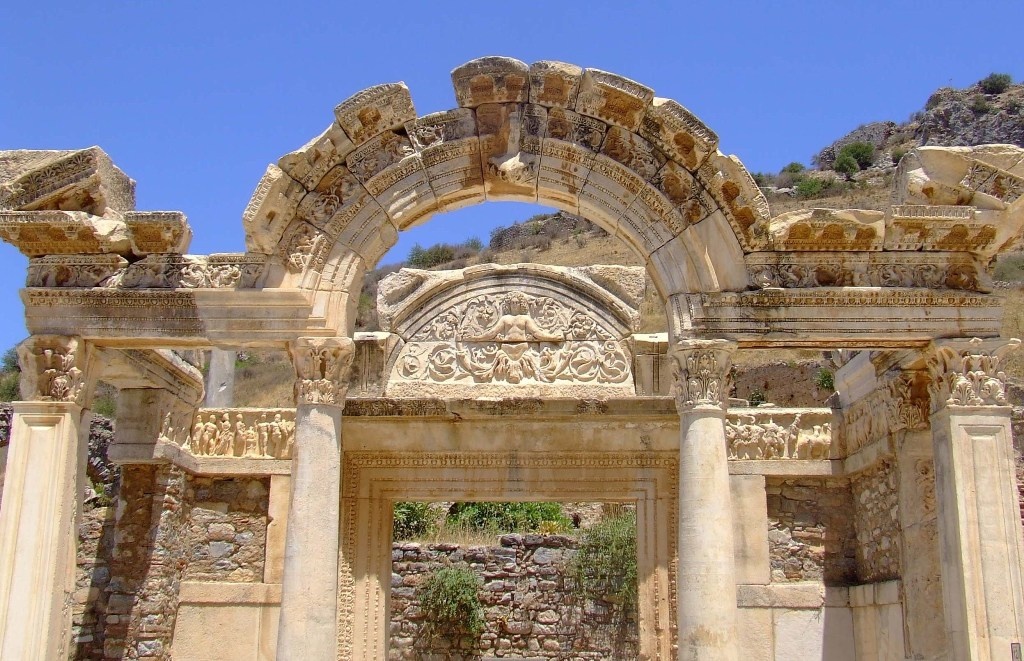
The Temple of Artemis Ephesus Turkey
The Temple of Artemis, located in ancient Ephesus in Turkey, was one of the Seven Wonders of the Ancient World and remains a symbol of ancient grandeur and religious significance. Constructed around 550 BC during the reign of King Croesus of Lydia, it was dedicated to Artemis, the Greek goddess of the hunt, wilderness, and fertility. The temple underwent several reconstructions due to destruction from fire and other events, with the most notable being the third and final construction around 323 BC, financed by the wealthy Ephesians and overseen by the architect Dinocrates.
The Temple of Artemis was renowned for its enormous size and intricate design. It measured approximately 377 by 180 feet (115 by 55 meters) and was supported by 127 columns, each standing 60 feet (18 meters) tall. The temple’s grandeur was further enhanced by its elaborate decorations, including sculptures and reliefs that depicted various mythological scenes and figures.
Despite its historical significance, only a few columns and fragments of the temple remain today. These remnants, including a partially reconstructed column and a large number of scattered marbles, give a glimpse into the temple’s former magnificence. The site of the Temple of Artemis, located near the modern town of Selçuk, serves as an important archaeological and cultural landmark, offering visitors a sense of the scale and splendor of one of antiquity’s greatest religious structures.
The Odeon Ephesus Turkey
The Odeon of Ephesus, an ancient theater located in the city of Ephesus in Turkey, is a remarkable structure reflecting the cultural and architectural achievements of the Roman era. Built in the 2nd century AD, the Odeon served as a small, roofed theater primarily used for musical performances, public speeches, and other civic events.
Architecturally, the Odeon is notable for its semi-circular seating arrangement and its intimate scale compared to the larger theaters of the time. It could accommodate approximately 1,500 spectators, making it a more intimate venue for performances and gatherings. The theater’s seating area is divided into several tiers, with marble seats and a well-preserved orchestra pit at the front where performances took place.
One of the Odeon’s defining features is its beautifully decorated facade, which includes a series of intricately carved columns and arches. Although much of the original structure has been damaged or lost over time, the remaining ruins offer insight into the grandeur of Roman theater architecture and the cultural life of ancient Ephesus.
Today, the Odeon of Ephesus stands as a significant historical and archaeological site, showcasing the city’s rich heritage and offering visitors a glimpse into the artistic and social activities that once flourished in this ancient metropolis.
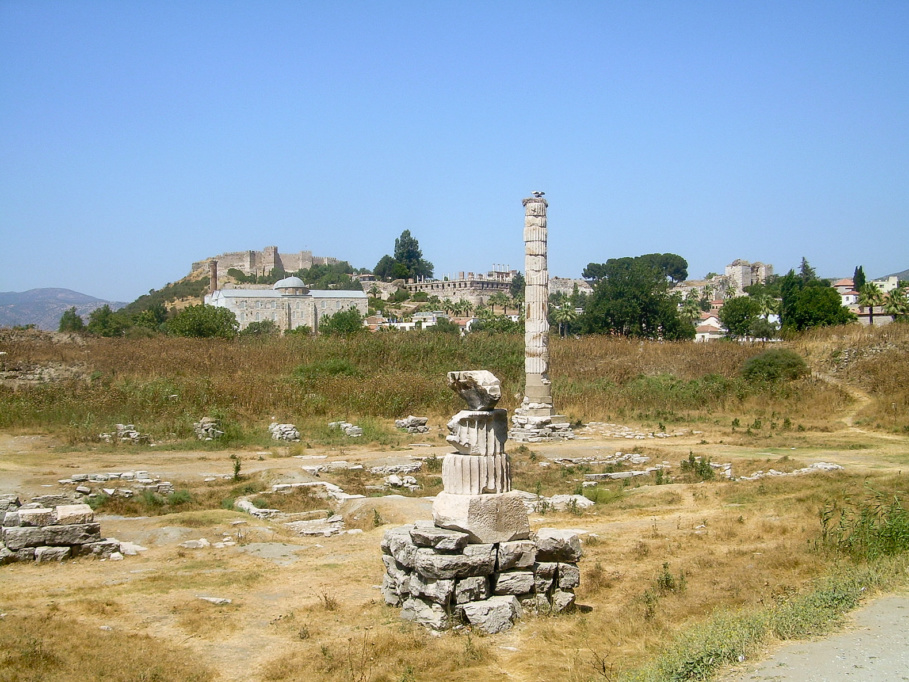
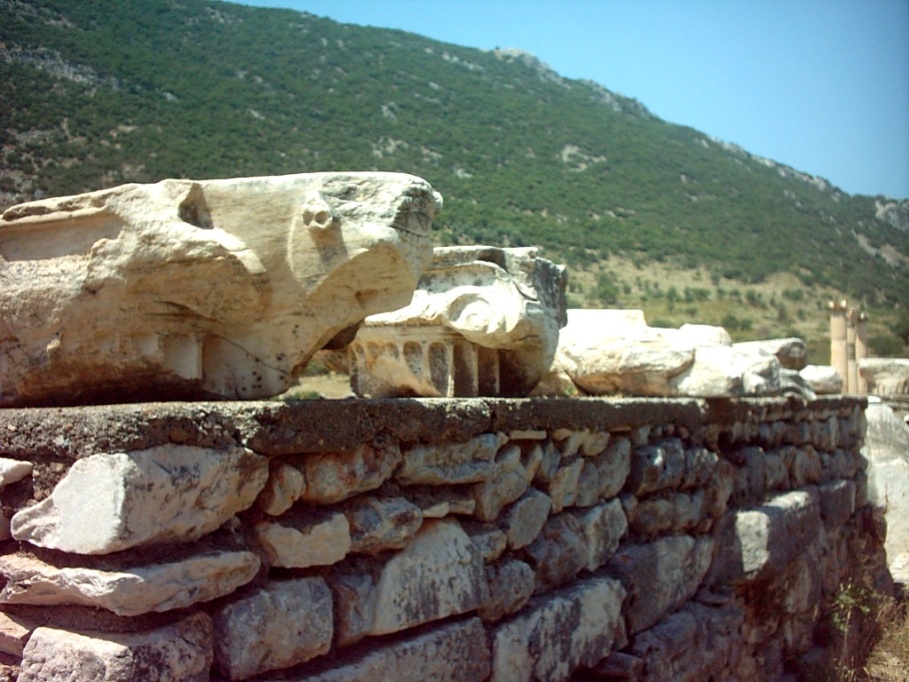
The Temple of Domitian Ephesus Turkey
The Temple of Domitian, located in ancient Ephesus in Turkey, is a notable example of imperial worship and Roman architectural prowess. Constructed in the late 1st century AD, during the reign of Emperor Domitian (81-96 AD), the temple was dedicated to the deified emperor and his family, reflecting the Roman practice of honoring emperors as gods.
Architecturally, the Temple of Domitian was a grand structure, designed to convey the power and divinity of the emperor. Although much of the temple has been lost over time, its remains provide valuable insights into Roman temple design and the scale of imperial architecture. The temple was originally built on a raised platform and featured a large cella (inner chamber) that housed a statue of Domitian. The entrance was marked by a monumental staircase leading up to a portico with Corinthian columns, which once supported a richly decorated facade.
The temple was part of a larger complex that included a series of surrounding buildings and open spaces, contributing to the grandeur of the imperial cult in Ephesus. Over the centuries, the temple suffered damage from earthquakes and other events, leading to its eventual abandonment and decay.
Today, the ruins of the Temple of Domitian are situated near the main square of Ephesus, close to other major structures such as the Library of Celsus and the Great Theatre. Despite the temple’s partial ruin, its remains continue to be an important archaeological and historical site, offering visitors a glimpse into the religious and cultural significance of imperial worship in ancient Ephesus.
The Great Theatre Ephesus Turkey
The Great Theatre of Ephesus is one of the most impressive and well-preserved ancient theaters in the world. Located in the ancient city of Ephesus in Turkey, this monumental structure showcases the grandeur and architectural sophistication of Roman public entertainment.
Constructed in the 3rd century BC during the Hellenistic period and later expanded under Roman rule, the theatre could accommodate up to 25,000 spectators. This made it one of the largest theaters in the ancient world. Its design features a semi-circular seating arrangement with tiered rows that rise in a sweeping curve around a central performance area known as the orchestra. The stage building, or scaenae frons, was richly adorned with columns and decorative elements, although much of it has been lost over time.
The Great Theatre was used for a variety of events, including dramatic performances, gladiatorial contests, and public assemblies. Its acoustics are exceptional, allowing for clear sound throughout the vast seating area, which is a testament to the skill of its ancient engineers.
Today, the Great Theatre remains a major highlight for visitors to Ephesus, offering a glimpse into the cultural and entertainment practices of ancient Rome. Its sheer scale and architectural beauty continue to impress, and it stands as a powerful symbol of Ephesus’s historical significance. The theatre is also occasionally used for modern performances and events, bridging the ancient and contemporary worlds.
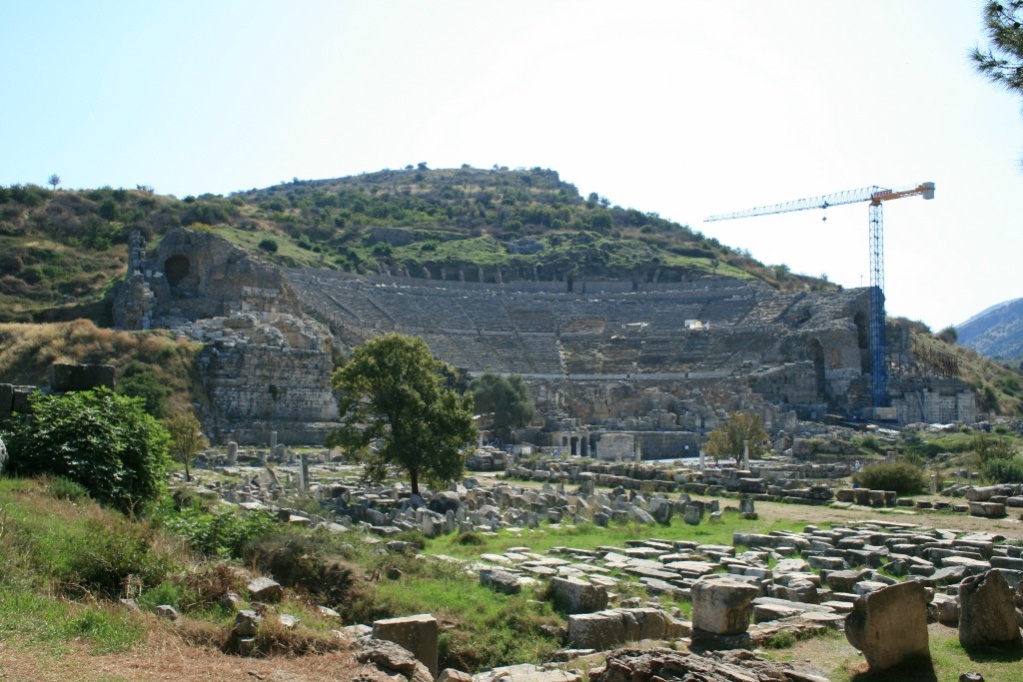
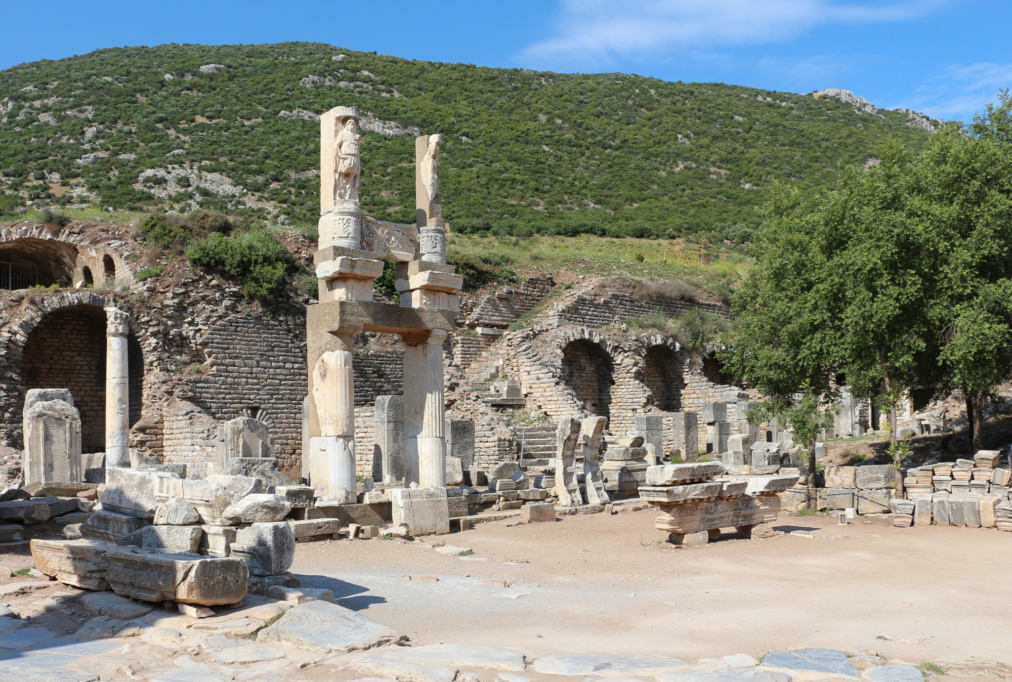
Curetes Street Ephesus Turkey
Curetes Street in Ephesus is a significant and historic thoroughfare that offers a fascinating glimpse into the urban planning and architectural grandeur of ancient Ephesus. This major street runs parallel to the city’s main avenue, leading from the Theater of Ephesus to the Library of Celsus, and was one of the principal roads in the city during the Roman period.
Curetes Street is renowned for its impressive colonnaded sidewalks, which were once lined with grand public and private buildings, temples, and statues. The street was named after the Curetes, the ancient priestly group associated with the cult of Artemis. Walking along Curetes Street, visitors can admire the remains of the columns and arches that once supported a richly decorated covered portico, providing shade and shelter to pedestrians and vendors.
Significant landmarks along Curetes Street include the Temple of Hadrian, notable for its ornate facade and intricate sculptures, and the beautiful marble decorations that hint at the street’s former splendor. The street is also flanked by a series of well-preserved fountains, shops, and baths, showcasing the city’s bustling commercial and social life.
Today, Curetes Street serves as a central feature of the Ephesus archaeological site, offering visitors a chance to explore the ancient city’s layout and architectural achievements. The ruins along this street provide valuable insights into the urban design of one of the most prominent cities of the ancient world.
